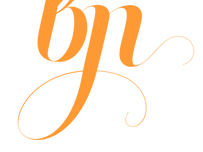The aesthetic quality of a historical Baroque artwork features an address to the mind (or, at the time the work was made, the “soul”) of the viewer through an appeal to the body -- via intense sensory experience. Similar qualities are attributable to what have come to be called neo-baroque works in contemporary art: mobilizing hyperbolic visual effects, or through intensified engagements with material and aesthetic practices, they attain qualities that exaggerate reality in order to draw attention both toward and away from the subject of ostensible inquiry. Literary Scholar and Canada Research Chair, Walter Moser, has argued that such works produce “ontological instabilities.” The exhibition, Barroco Nova: Neo Baroque Moves in Contemporary Art, presents a vast range of projects by 19 Canadian and international contemporary artists whose approaches rely on intensified appeals to our senses to produce an engaged address to our cultural moment: visions that arguably take up Liebnitzian notions of the fold and possible worlds.
Regarding other significant manifestations of the neo-baroque in recent art, the exhibition “Ultra Baroque: Aspects of Post-Latin American Art”, 2001, is an obvious landmark. In a catalogue essay that accompanied the show, Curator Elizabeth Armstrong acknowledged that with the American neo-baroque:
“…part of the complexity lies in the inextricable link between the
baroque as a style and a period, and the (effect of) the aftermath and
legacy of the colonization of the Americas.”
Armstrong further argued that contemporary manifestations of the baroque allow viewers to “understand and analyze the processes of transculturation and hybridity that globalization has highlighted.” This condition can also be observed in numerous other recent contemporary art projects as well, albeit to further demonstrate divergent responses to shifting notions of identity and nation, and to foreground renewed ideas concerning the body, especially within entertainment-oriented and media-charged cultural environments. It can also be argued that new baroque attitudes in art demonstrate a charged reconsideration of modern aesthetic preoccupations through strategies inflected by post-modern discourses, including those focused on post-coloniality, gender, and contemporary media.
The exhibition Barroco Nova: Neo Baroque Moves in Contemporary Art draws together works by Canadian and international practitioners to manifest the lively complexity that neo-baroque theorizations propose. Utilizing a range of traditional and current medias, each artist’s work operates in relation to a contemporary field of interest, while also showing itself to be dedicated to describing an aesthetic site within which hybridity and contradiction are possible. Among the many questions posed by these works, both separately and together, a central problematic of the exhibition concerns the transferability of baroque sensibilities and styles across cultures. The sense that these North American practitioners are working according to motivations -- whether political, social, or aesthetic – that bear similarities to those of their southern counterparts, further enlivens this syncopated field of expressive inquiry.
Barroco Nova: Neo-Baroque Moves in Contemporary Art offers a complex yet surprisingly unified engagement with contemporary art projects that are linked according their intense visuality and in their highly charged address to contemporary experience -- whether through the body, in time or in space -- in the twenty-first century.
Venues, Artists and Thematics:
The exhibition will be presented simultaneously in three venues within London, Ontario:
Site 1: The ArtLab (UWO); Site 2: The McIntosh Gallery (UWO) and Site 3: Museum London. Each site will be the focus of one or more of the specific sub-themes represented in the overall Barroco Nova: Neo-Baroque Moves in Contemporary Art exhibition.
Site 1 Urbanspace features works by Jeremy Drummond, Rhonda Weppler, Trevor Mahovsky, and Jin-me Yoon.
Site 2 Surface/Other will feature works by Brendan Fernandes, Kent Monkman.
Site 3 The Fold and Possible Worlds will feature works by David Altmejd, Shary Boyle, Allora and Calzadilla, Kathy Slade, Luanne Martineau, Brendan Tang, Bitter and Weber, Kelly Wood, and Diana Thater.
Gala information (click to download the pdf)
Friday October 14, 2011
Mcintosh Gallery | 5 - 6:30 pm
Artlab | 6 - 7:30 pm
Museum London | 7:30 - 10pm
with FREE shuttle bus |
|



